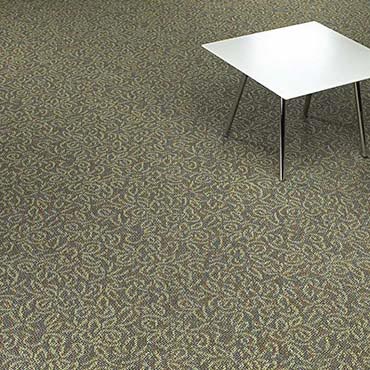Commercial Loop Pile (Pattern)

Navigating the World of Commercial Loop Pile Patterned Carpeting
Introduction:
In the realm of commercial interiors, the choice of
flooring plays a pivotal role in both aesthetic appeal and practical functionality. Among the diverse options available, commercial loop pile patterned
carpeting stands out for its unique blend of durability, style, and comfort. This article delves into the various aspects of this flooring option, providing architects, interior designers, and commercial
floor covering buyers with a comprehensive understanding of its benefits, applications, and considerations.
Understanding Loop Pile Carpeting:
Loop pile carpeting is characterized by its looped yarns, which are tufted into the backing material to create a smooth, uncut surface. This construction method enhances the carpet's durability, making it an ideal choice for high-traffic commercial spaces. The loop pile design can vary in height and density, allowing for a range of textures and comfort levels.
The Allure of Patterns:
Patterned carpeting adds an additional layer of visual interest to commercial spaces. These patterns can range from subtle, geometric designs to bold, intricate motifs. They serve not only an aesthetic purpose but also practical functions, such as camouflaging dirt and wear in high-traffic areas, thereby maintaining a cleaner appearance over time.
Material Considerations:
Commercial loop pile patterned
carpets are typically made from synthetic fibers like nylon, polypropylene, or a blend of different materials. Nylon is prized for its resilience and ability to retain color, making it a popular choice for commercial applications.
Polypropylene, while not as durable as nylon, offers resistance to stains, fading, and moisture, making it suitable for areas prone to spills.
Sustainability and Eco-Friendly Options:
As sustainability becomes increasingly crucial in building design, eco-friendly carpet options are gaining popularity. Manufacturers now offer carpets made from recycled materials, contributing to LEED certification and other green building standards. Additionally, the production processes for these carpets often emphasize reduced emissions and energy efficiency.
Acoustic and Comfort Benefits:
Loop pile carpets are known for their sound-absorbing qualities, making them an ideal choice for offices, hotels, and other environments where noise reduction is desired. The cushioning effect of the carpet also adds to the comfort of walking and standing, an important consideration in workspaces and public areas.
Maintenance and Longevity:
Proper maintenance is key to extending the life of loop pile patterned carpets. Regular vacuuming, prompt attention to spills, and periodic professional cleaning can help maintain the appearance and functionality of the carpet. Additionally, choosing patterns and colors that conceal wear and dirt can prolong the carpet's aesthetic appeal.
Design Flexibility and Customization:
For architects and designers, the range of patterns, colors, and textures available in loop pile carpets offers extensive design flexibility. Customization options allow for the creation of unique spaces that reflect a brand's identity or a building's architectural style.
Application and Use in Commercial Spaces:
Commercial loop pile patterned carpets are suitable for a variety of spaces, including offices, retail environments, hotels, and educational institutions. Their durability and aesthetic appeal make them a versatile choice for different design requirements and functional needs.
Conclusion:
Commercial loop pile patterned carpeting presents a compelling flooring solution for architects, interior designers, and commercial buyers. Its combination of durability, aesthetic versatility, and practical benefits make it a fitting choice for a wide range of commercial environments. By considering factors such as material, pattern, sustainability, and maintenance, professionals in the field can make informed decisions that enhance both the form and function of their commercial projects.
Disclaimer: The information provided in this article is for general informational purposes only. While we strive to ensure the accuracy and reliability of the information presented, we make no warranties, express or implied, about the completeness, accuracy, reliability, suitability, or availability with respect to the content. Any reliance you place on such information is strictly at your own risk. We recommend consulting with professionals for specific advice tailored to your project’s needs, particularly regarding building codes, regulations, and product specifications.
Under no circumstances shall we be liable for any loss or damage, including without limitation, indirect or consequential loss or damage, arising from the use of, or reliance on, the information provided in this article.



